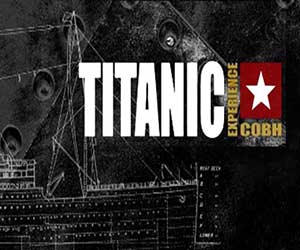Have A Safe Christmas
Ten tips for a safe Christmas
Giving presents and putting up the fairy lights can be among the best parts of Christmas. But there are some simple precautions you should always take when buying toys and decorations.
Here are five tips for having a safe Christmas…
1. Look for the CE mark
 All toys for sale in Ireland must have the CE safety mark (see left). The CE mark shows that the product complies with design safety standards.
All toys for sale in Ireland must have the CE safety mark (see left). The CE mark shows that the product complies with design safety standards.
Christmas lights, and other electrical products sold in the EU, must also comply with safety standards, and must carry a CE mark. All toys for sale in Ireland must have the CE mark
The mark should be visible on the product itself or on its packaging. If it doesn’t have the CE mark, don’t buy it.
2. Check the product
When buying a toy, take time to examine it first for rough edges, dangerous or fold-away parts or small holes that could trap little fingers.
Does it have any detachable small parts which could lodge in ears, nose or throat? Are there movable parts that might detach and be dangerous?
Christmas lights can get knocked about on the shelves, so always make sure they have a three-pin plug and check them carefully for, signs of damage such as frayed or exposed wires, broken or cracked sockets, or loose connections.
Respect the toy’s age warnings (for example, "Not suitable for children under three years old") and other warnings.
When buying a computer game, check the age cert in case it portrays violence or contains material of an adult nature
3. Mind the electrics
Always take care when buying toys with electrical parts or a transformer. Read the safety instructions. The device should be properly insulated and protected to prevent a risk of contact with live wires.
Don’t mix old and new or different strength batteries in the toy. That can make the old or weaker batteries very hot.
Keep a keen eye out for the miniature batteries used in watches and musical toys – these too could be swallowed by curious toddlers.
And if your Christmas lights look worn, it is much safer to replace them altogether rather than repairing them.
If bulbs blow, replace them with the correct bulbs – ones of the same voltage and wattage. Unplug the set of lights when replacing bulbs.
4. Is it going to be used correctly?
Always read the instructions on how the toy is intended to be used and supervise its use if supervision is recommended.
Although the toy you buy may be suitable for the age of the child you bought it for, you should ask yourself whether a younger child in your home may be at risk if they come in contact with the toy and take appropriate precautions.
Respect the toy label’s age warnings (for example, "Not suitable for children under three years old"). A chemistry set intended for a 10-year-old shouldn’t be given to a three-year-old.
When purchasing a computer game, check the age cert in case it portrays violence or contains material of an adult nature.
Don’t leave Christmas lights on for prolonged periods or when the room is empty. This not only saves on your electricity bills but is also good safety practice.
Never use the lights outdoors unless they are specially made and certified for outdoor use.
5. Take action
If you come across a toy or a set of Christmas lights that seems unsafe or doesn’t have a CE Mark, don’t buy it. Instead, tell the NCA about it
6. Make sure your Christmas tree is safe
If you are buying an artificial tree, make sure it has been pre-treated to increase flame resistance.
Place real Christmas trees securely in a sturdy base filled with water – metal stands cause trees to dry out and become flammable. Check the water level daily
Keep the tree away from candles, heaters, fireplaces or other heat sources – remember, a fire can start with a combination of heat and dry material and doesn’t need a naked flame.
7. Be careful with candles
Keep candles out of reach of children and pets. Use an appropriate candleholder placed on a stable, heat-resistant surface.
Placing tinsel around a candle is something of a tradition, but can be very dangerous. It’s best not to place any flammable material near a flame, but if you do, make sure to keep the tinsel well away from the flame, check it regularly and move it down the stem as the candle burns down.
Never use candles on a Christmas tree, even an artificial tree. Never place them on top of a TV or near curtains. Keep burning candles away from drafts, vents and air currents, and well away from curtains.
Always extinguish candles before leaving the house or going to bed.
8. Be aware of fire risks
As well as candles and Christmas lights, be aware of the other sources of fire in the home.
Always use a sparkguard on open fires. Keep children, children’s clothes, mantelpiece decorations and discarded wrapping paper away from fires.
Ensure that cigarette butts are extinguished and ashtrays are emptied safely. Check your smoke alarm is working.
9. Get the right gear
If Santa delivers bikes, roller skates, skateboards or other wheeled items this year, make sure those riding them have the right protective gear.
A CE Mark is also required for personal protective equipment, such as helmets, knee pads etc. Never buy protective equipment without a CE Mark.
10. Recycle and be safe!
Always dispose of (in your recycling if possible) discarded wrapping paper, plastic bags, ribbons, string, plastic tags, used batteries etc as soon as they’re not needed any more. Make sure younger children don’t play with anything that could cause suffocation.
Download the ….. toy safety booklet
Familyfun is helping to provide a better service in ….. alerting you and your family to unsafe and defective products








